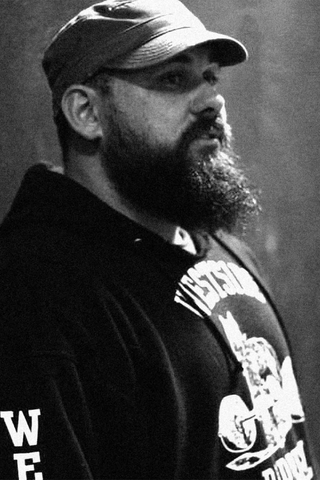The Legacy of Westside Barbell: Why We Haven’t Stopped Since Louie’s Passing

There’s been chatter over the last two years about whether Westside Barbell should have ceased to exist after Louie Simmons passed away. Some people, pointing to Louie’s own words, argue that Westside was supposed to die with him. But the reality is more complex, and it’s time to set the record straight.
Yes, the Powerlifting Gym Died with Louie
Louie was clear about one thing: when he passed away, the Westside Barbell powerlifting gym—the team, the environment, and the culture of powerlifting—was to end. And that’s exactly what happened.
The original gym became what it was always meant to be: a living museum of everything Louie built. The iconic Chalkboard, and the equipment that witnessed the greatest feats of strength became a testament to Louie’s legacy.
I became the caretaker of that legacy, ensuring that anyone who comes to visit can see where Westside Barbell and Louie’s revolutionary ideas on training were born. However, while the gym in its original form may have ended, Louie’s influence lives on through many former Westside members who carry forward everything they learned.
Names like Burley Hawk, Laura Phelps Stackhouse, Dave Hoff, Jason Coker, and Luke Edwards, to name but a few, are keeping the spirit of Westside Barbell powerlifting alive. These athletes are taking everything they experienced as a lifter, as a member, and what they learned under Louie’s guidance and applying their own interpretation of the System, particularly in the world of powerlifting.
Louie always believed in evolving the system, and now, those who trained under him are continuing to push the boundaries of strength training, carrying his influence into gyms and competitions across the world.
But Westside Barbell Is More Than Just a Gym
There’s another side to Westside that Louie wanted to continue, and this is where people get it wrong. Louie wasn’t just a coach or a gym owner; he was a visionary.
He understood that the Conjugate Method—the training system he popularized and perfected—had a purpose beyond powerlifting. Louie wanted the world to see what his system could do with professional athletes, not just powerlifters. He wanted the next generation of athletes, whether they’re aspiring pros or already established, to experience the culture and environment of Westside Barbell, where results are the only thing that matter.
Westside Barbell is also a business—a business that protects what was most valuable to Louie: his intellectual property meaning his education, his trademarks, and his patents. Letting Westside dissolve overnight would mean allowing these assets to fall into the hands of those who would misuse and exploit them.
And we all know who those people are—the ones who would twist Louie’s methods for their own gain. Louie wasn’t about to let his life’s work become fodder for the wrong people, and to think otherwise is to completely misunderstand who he was. It’s ignorant, it’s disrespectful, and it goes against everything Louie stood for.
The Future of Westside: New Facility, Same Purpose
I waited two years before making any major moves, giving the landscape time to settle. During that time, we built a new facility. And yes, it looks very different from the Westside Barbell gym that everyone knew, and that was deliberate. It was the hardest and most expensive option, but it was the right one. The athletes are different, the look is different, but the purpose and the attitude remain exactly the same.
We are here to educate the world on our interpretation of the Conjugate Method and to hold athletes accountable to the highest standards—just like Louie did. We waited those two years to gather objective data and results from our athletes. We didn’t rush to make noise or boast about success; we let the results speak for themselves. That’s what separates us from the rest of the industry.
Louie’s Legacy Lives On
To those who question whether Westside Barbell should continue: Louie Simmons wasn’t the type of man to leave anything to chance. He spent his life building a system that works—a system that continues to work today. Louie’s legacy isn’t just about powerlifting; it’s about creating a training methodology that challenges athletes to be their absolute best. And that’s exactly what we’re doing, unapologetically.
To fully grasp what Westside Barbell represents, it’s important to understand where the name came from. Louie Simmons didn’t just come up with it on a whim—he was honoring the original Westside Barbell Club from Culver City, California.
That gym, led by legends like Bill "Peanuts" West, was renowned for its training methods and the culture of strength it fostered. When the original Westside Barbell disbanded, Louie felt an obligation to carry the name forward in recognition of the influence that gym had on him and the strength training world.
Westside Barbell in Columbus was built on the same principles: pushing the limits of human performance and never settling for mediocrity. Louie wanted to ensure that the name—and everything it stood for—didn’t die with the original club in California. He took up the mantle, and in doing so, created his own legendary gym that forever changed powerlifting and strength training. A powerlifting gym that could never be replicated.
The continuation of Westside Barbell today is an extension of that same philosophy. Louie honored the past while building something entirely his own. Now, we carry that forward—preserving his legacy while continuing to push the limits of strength training.
We owe it to Louie, to his legacy, and to every athlete who walks through our doors to carry this mission forward. So no, Westside Barbell didn’t die with Louie—it evolved. And if you don’t understand that, then you never truly understood what Westside was all about.
- Tom





